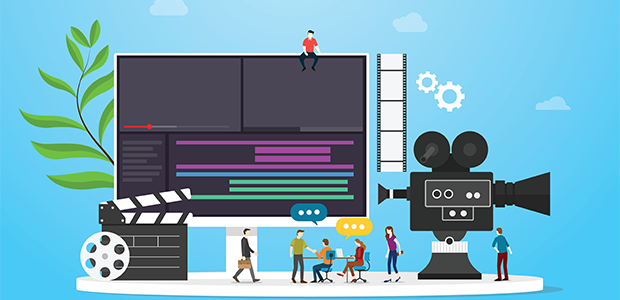
Synthesia AI launches Live Collaboration for teams to work together
Synthesia AI has launched a new feature to its product offering, Live Collaboration, to give teams a new way to work together on video content.
Video creation is very rarely a solo activity; editors frequently collaborate with subject matter experts on scripts or visuals, and managers review drafts from their teams. Until now, these interactions, whether between peers working on a video or with other teams providing input, have taken place outside of video editing platforms, rendering them less efficient.
Historically, video editing has been an individual pursuit, with creators working independently to realise their visions. Video editors would gain contributions outside of the editing suite, but the project itself would have to be completed alone. However, Synthesia understands that genuine innovation flourishes in a collaborative setting. Through its newest product offering, Live Collaboration, the company is dismantling obstacles and facilitating effortless cooperation among users, regardless of their geographical location or time difference.
This release encompasses the following features:
- Sharing: Users working in the Synthesia editor can receive Full Access, Can Edit, or Can Comment permissions, enabling joint efforts on a video project.
- Co-editing: Participants can view each other's cursors, selections, and the scenes being edited by their colleagues.
- Commenting: Anyone granted Can Comment permission can use the editor in a comment-only mode, applicable to both guest users and regular workspace members.
- Version History: Users can access and manage the version history, safeguarding against the loss of progress. Synthesia ensures your work is automatically saved, allowing for the restoration or duplication of any session.
Synchronous and Asynchronous Collaboration
Users can engage in real-time video editing, working alongside team members during live sessions. This direct interaction promotes swift feedback, creative discussions, and prompt decision-making, enhancing the speed of development cycles.
In contrast, users also have the option of asynchronous editing, allowing for video modifications at their individual pace while still benefiting from continuous feedback through comments. Before the introduction of Live Collaboration, editing involved a cumbersome process of copying and link sharing. Now, with the ability to edit videos asynchronously within the same framework, the process has seen considerable improvement, eliminating the need for duplication and streamlining team collaboration.
Benefits of Collaborative Video Editing:
- Increased Efficiency: Live Collaboration enables multiple contributors to work on a video simultaneously, streamlining the editing process and shortening completion times.
- Enhanced Creativity: The collaborative environment encourages the exchange of ideas, exploration of different editing styles, and joint creation of content that exceeds the sum of its parts.
- Improved Communication: Our tools support direct and efficient communication among team members, facilitating the exchange of feedback and resolution of issues promptly.
- Flexible Workflows: Live Collaboration supports both synchronous and asynchronous modes, accommodating varied work preferences and schedules across different locations and time zones.

